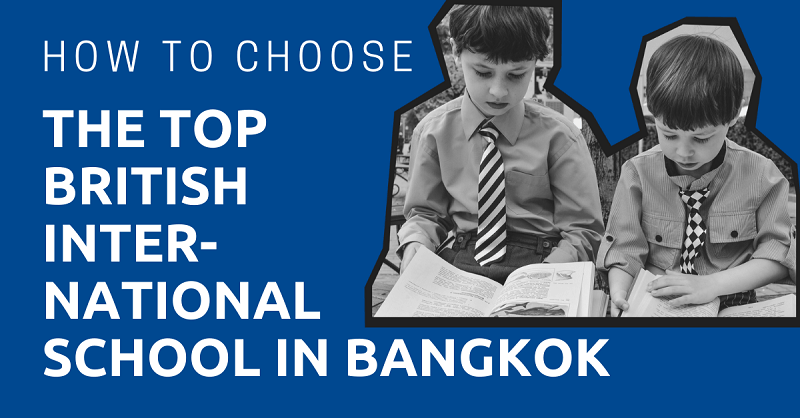
For many people the United Kingdom and educational excellence go hand-in-hand. Universities like Oxford and Cambridge or schools like Eton are renowned globally, boasting centuries of world-leading academic achievement.
It’s no wonder then that as many as 4,000 international schools worldwide have decided to adapt the British curriculum and give students the chance to benefit from some of that excellence without ever having to step off the runway at Heathrow.
From old institutions like Harrow, Bromsgrove, Rugby, and Shrewsbury to relative newcomers, Thailand is well-represented when it comes to British international schools.
And although the centuries of tradition in British education might make one think of mortar board hats and stuffy school uniforms, it goes without saying that the majority of Thailand’s British international schools are fully kitted-out with all the modern conveniences a 21st century school requires.
But with stiff competition from curricula like the International Baccalaureate out there, is all that tradition a good enough reason to choose a British school over a non-British school? Has the UK curriculum advanced enough with the times to provide for the unique needs of students in the 2020s, or is it a fusty old relic best left behind with the cane and the blackboard?
In this article we’ll give you a thorough rundown of UK schools in Thailand – from the curriculum to half-term holidays and everything in between. We’ll tell you what you can expect from assessments, and what differentiates British schools from other international schools.
And finally we’ll top it off with a comprehensive list of UK schools here in Thailand, complete with contact details if you want to check any of them out yourself. So without further ado …
"*" indicates required fields
Disclaimer: This article may include links to products or services offered by ExpatDen’s partners, which give us commissions when you click on them. Although this may influence how they appear in the text, we only recommend solutions that we would use in your situation. Read more in our Advertising Disclosure.
Contents
The British Curriculum
Confusingly, rather like the ‘US curriculum’ there is no set ‘British curriculum’. After all, the United Kingdom is comprised of four separate countries, and as one would expect each of these countries has a curriculum of their own.
So when international schools claim to follow the ‘British’ curriculum, what they’re really following is the National Curriculum for England. But to keep things simple – and with apologies to the citizens of Wales, Scotland, and Northern Ireland – this is what we’ll be referring to when we talk about the British curriculum from now on.
The British curriculum is a lot more rigorous than most countries are probably used to, covering not just the standards students should be achieving at each stage of their education, but often the content too. As one might expect, the curriculum has long been the focus of political squabbling and reforms are frequent, with the current statutory national curriculum dating from 2014.
The British curriculum places a heavy emphasis on developing creativity, critical thinking skills, and flexibility. Learning is cumulative, with students constantly building on what they’ve learned in previous years, and students are often encouraged to explore how different subjects relate to each other.
Over time, students narrow their focus down to just a few subjects which they cover in much greater depth.
There are a number of compulsory subjects that students are expected to cover before entering Key Stage 3 (more about this soon). These are:
- English (including Speaking and Listening)
- Maths (which it is recommended be taught daily)
- Science
- Design and Technology (DT)
- Information and Communication Technology (ICT)
- History
- Geography
- Art and Design
- A Language (starting in Key Stage 2)
- Music
- Physical Education (PE)
There are also three non-statutory subjects which schools are nevertheless obliged to teach – namely Religious Education (RE), Citizenship, and Personal, Social, and Health Education (PSHE).
The British School System
Education is mandatory in the UK for students aged from 5 to 16, however parents can opt to enrol their children into the Early Years Foundation Stage from as young as 2. Students headed for university are also expected to complete A-Levels, which brings the school-leaving age up to 18.
Education in the UK is divided up into four chunks – Primary Education, Secondary Education, Further Education, and Higher Education – but for our purposes, we’re mainly going to be focussing on the first two. Primary Education in the UK covers students aged 5 to 11, and is often further subdivided into Infants (aged 5 to 7) and Junior School (age 7 to 11).
Secondary school runs from ages 11 to 16, although many students (particularly at international schools) stay on until 18 to complete university preparation.
School Calendar and School Day
In the UK, the academic year runs from September to July, although many British international schools shift those dates a little forward and run from late August to the end of June.
The British academic year is divided into three terms (unlike the Thai academic year, which is divided into two). At international schools, expect Term 1 to run from August to the Christmas break in December, Term 2 to run from January to the Easter/Songkran break in April, and Term 3 from May to late June/early July.
The teaching day at British international schools usually runs between around 7:30 am to 8:00 am and finishes between 3:30 pm to 4:00 pm, although this varies by school. Expect around six to eight class periods a day, again depending on the school.
Extracurricular Activities
Extracurricular activities (or ECAs) are a big selling point for many international schools, and British international schools are no exception. Most schools provide a huge variety of ECAs, ranging from sports to academics.
As an example, students at St. Andrews can choose to learn Mandarin, cook Indian food, or make movies, while Harrow students can choose between coding, climbing, or Zumba as just a handful of examples. As the UK is famously a sporting country, expect sports to also figure pretty heavily – both perennial British favourites like football, and popular local pastimes such as basketball or chair-ball.
Key Stages & Assessment
The British education system is divided up into five ‘Key Stages’, four of which are compulsory for all students. Each Key Stage provides a set of standards for each student to achieve, culminating in some form of assessment – usually a combination of exams and coursework.
Here’s how they break down:
Early Years
Early Years, also known as Nursery, covers students aged from around 2 to 5 years old (the equivalent to the US Kindergarten). Here students learn the absolute basics of education (numbers, letters etc.).
Students in the Early Years stage are assessed by a framework known as the Early Years Foundation Stage (EYFS), which provides a set of milestones and benchmarks each child should attain before moving into Key Stage 1. The Early Years stage is optional, although nevertheless extremely popular.
Key Stage 1
Key Stage 1 (sometimes also known as Infant School) is the UK-equivalent to the American elementary school. The first Key Stage which is compulsory for all students, it covers students aged between 5 to 7.
KS1 begins with an introductory year known as Reception, and also covers the first two academic years of Primary (known – appropriately – as Years 1 and 2).
Assessment in KS1 is divided up between Teacher Assessment and National Curriculum Assessments – commonly known as SATs (Standard Attainment Test) – with the tests mainly used to support the teacher’s judgement. Students take tests in Reading, Writing, and Maths.
Key Stage 2
Key Stage 2 (sometimes also known as Junior School) covers students aged from 7 to 11 (Years 3 to 6). KS2 students begin looking at subjects in greater depth than the foundational stages of KS1.
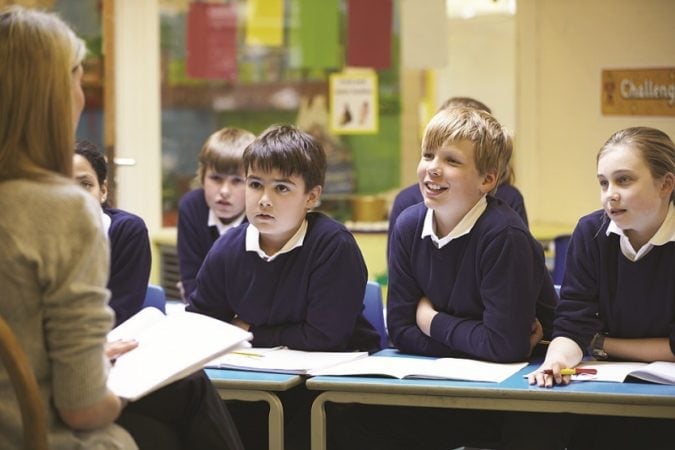
KS2 students take National Curriculum Tests in three subject areas – Reading, Grammar, Punctuation and Spelling, and Mathematics. As in KS1, students are also assessed by teachers in the core subjects of Reading, Writing, Mathematics, and Science, which are once again based on a framework of descriptors. Prior to 2014, these descriptors were provided by the National Curriculum.
However, schools have now been given a little more freedom to establish their own assessment systems.
Key Stage 3
Key Stage 3 covers the first years of secondary school (the equivalent of the US Middle School). KS3 students are aged between 11 and 14, and study in Years 7 to 9.
Once upon a time KS3 students were also assessed using National Curriculum assessments. However, as of 2009 this has been replaced by ongoing teacher assessment.
KS3 students cover the following mandatory subjects:
- English
- Maths
- Science
- History
- Geography
- Modern Foreign Languages
- Design and Technology
- Art and Design
- Music
- Physical Education
- Citizenship
- Computing
Key Stage 4
Key Stage 4 is the final stage of compulsory school for UK students. It covers students aged between 14 and 16 (Years 10 and 11). Here students begin narrowing down the subjects they study, with the opportunity to study a number of optional subjects in addition to a number of compulsory subjects. These compulsory subjects are divided up into Core subjects and Foundation subjects.
The Core subjects are:
- English
- Maths
- Science
The Foundation subjects are:
- Computing
- Physical Education
- Citizenship
Schools are also expected to offer at least one class in Arts, Design and Technology, Humanities, or a Language.
At the end of KS4 students sit the much-dreaded (by students) GCSEs (General Certificate of Secondary Education), which are the last compulsory exams students are expected to take. Students may sit anything between 5 to 12 GCSE exams selected from a list of around 50 subjects.
GCSEs used to be graded on an A* to F scale – however, they are now graded on a scale from 1 to 9, with 9 being the highest and 1 the lowest.
At international schools, students may instead sit the IGCSE (I standing for ‘international’), which is considered equivalent to the GCSE. There are currently two IGCSEs offered, one by the University of Cambridge and the other by the exam board Edexcel.
Key Stage 5
Key Stage 5 (also known in some quarters, rather confusingly, as the Sixth Form) is the final stage of school-age education before Higher Education (e.g university) or Further Education (e.g technical schools).
Students in KS5 are given free reign to choose any subjects they like, generally settling on between 3 to 5 subjects to study in depth. They’ll then work towards earning their A and AS-Level qualifications, which can be used for applying to university.
Differences Between British Schools and Other Schools
While British international schools share a lot of similarities with other international schools, there are a few things which mark them out as different. These include:
Key Stages
The British education system is much more clearly structured than the system used in places like the USA, with its education system broken up into the well-defined Key Stages we’ve covered above.
Increased Specialisation
As students move through the British education system, their focus narrows increasingly on to a few key subjects, which are then covered in depth. By the final year of secondary school, it’s not uncommon for full-time students to be studying just three subjects – albeit at a very intense level.
By contrast, systems such as the American system are much broader in scope right up until the end of high school, with students graduating with a diploma that averages out all of their subjects.
School Uniforms
Take a glance at the website of most British international schools and you’re likely to see some surprisingly smartly-dressed young people.
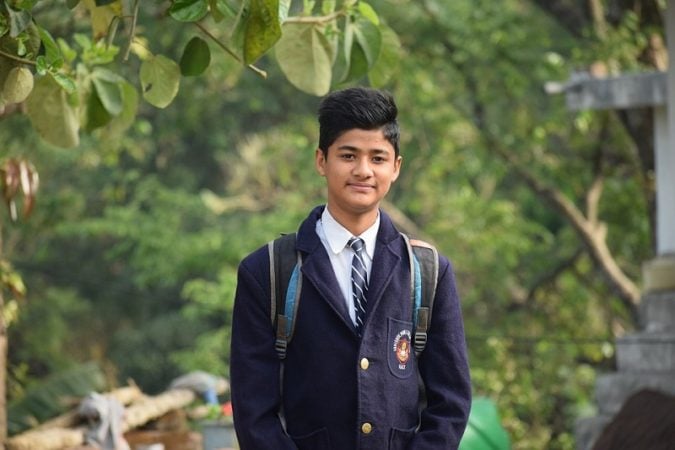
While it’s common for international schools in Thailand to issue uniforms for their students, British international schools – in keeping with their reputation for historical excellence and tradition – tend to have more formal uniforms than their American counterparts, with neckties, blazers and even straw boater hats making an appearance.
School Calendar
As stated above, the British school calendar is split into three terms. This differentiates it from both the Thai and American school years, which tend to be split into two terms.
Why Choose a British International School?
For most British students (or for students who wish to study in British higher education), choosing a British international school is a no-brainer. However, there are a number of advantages that British schools have that may give other students a good reason to consider choosing a British school. These include:
A Strong Reputation
The British education system has long been held in high-regard, and people have been sending their children to be educated in the UK for centuries. Many British international schools are off-shoots of famous, world-renowned institutes such as Harrow or Rugby. Having qualifications from a renowned British school will always look good to universities and employers.
Excellent Outcomes
British international schools perform well in world-rankings. In recent surveys by COBIS (Council of British International Schools), British international schools outperformed schools in the UK in both GCSEs and A-Levels.
Highly-Structured Curriculum
The British curriculum is highly-structured, with clear measurements of progress that allow parents to easily gauge their child’s performance each step of the way. The British curriculum is one of the only curricula that provides internationally-recognised qualifications for every subject for students up to 16 years of age.
Extracurricular Activities
British schools place a strong emphasis on extracurricular activities. Expect everything from team sports to arts and drama to be represented, as well as academic pursuits such as debate clubs or the Model UN. British schools aim to produce confident, sociable, and well-rounded students.
Choosing a British School – What You Need to Know
So you’ve decided to send your kids to a British curriculum school. That’s the easy part out of the way. Now here comes the hard part – deciding on which of Thailand’s 60-plus British international schools to choose. Here are some things to consider while you’re making your decision:
Accreditation
The clearest indicator of quality when it comes to British schools is its accreditation. Getting accredited is no easy feat – schools will have to meet a number of demanding criteria to get all that all-important stamp of quality.
Unfortunately, there is no one all-encompassing quality assurance body, which can make things a little tricky. Leading schools will be members of the Council of British International Schools (COBIS), or a regional association such as the Federation of British International Schools in Asia (FOBISIA).

They might also be members of the Headmasters and Headmistresses’ Conference, the Independent Association of Prep Schools, or the Council of International Schools. The UK Department of Education also offers voluntary inspections for British Schools Overseas (BSOs), with the results published on their website.
Tuition Fees
Fees at British international schools vary widely, ranging from as little (comparatively) as 80,000 THB per year to as high as a 1,000,000 THB per year at top institutions like Shrewsbury. Generally fees are dependent upon level of education, with prices rising the higher-up the grades you go.
Note that in addition to these tuition fees, many schools will expect you to pay additional fees such as registration, transportation, and building (or campus development) fees (e.g. for maintenance of facilities).
Values
What values does your prospective school claim to have? What do they expect from their students? And most importantly, how closely do the students adhere to them?
You can find the answers to some of these questions with some careful perusal of the school website. However, to really get a good feel of the school’s values it’s always worth visiting the school in person yourself.
Keep an eye out for annual Open Days, and when you’re there pay careful attention to the students you see around you – are they smartly dressed? Polite? Happy? Or are they grappling each other to the ground and tearing posters off the walls?
Results
Good test scores might not be everything, but they can definitely be a good indicator of a school’s quality. Many schools will publish their GCSE and/or A-Level results in places like Which School Advisor or on their own websites, so it’s a good idea to take a careful look before settling on a school.
Some schools will also list what universities their graduating students have successfully enrolled in, which can also be a good indication of how well the school is performing.
Facilities
This is another area in which it helps to visit the school in-person. It’s easy enough for a school to use lighting techniques and the wonders of Photoshop to make their run-down old library look like a state-of-the-art modern learning facility, but it’s a lot harder to hide it when you’re standing there viewing it with your own eyes.
Thankfully most British international schools in Thailand don’t shirk on their facilities, and you’re unlikely to be disappointed in this regard. But it’s worth factoring in just in case.
Teachers
Where possible the majority of British international schools will recruit directly from the UK, and will expect teachers to hold QTS (Qualified Teacher Status). Teachers should also be vetted by either a police disclosure form via CBS (UK) and/or a local police check (Thailand).
The requirements for working at an international school tend to very high and positions are competitive, so the majority of British international school teachers will be of a high standard.
But this is also something you can verify with your own eyes to an extent – are the teachers dressed professionally? Do they seem keen to work? Do they have a good rapport with their students? Then it’s likely you’re looking at a good school.
Boarding Facilities
Some British international schools in Thailand (such as Harrow or Bromsgrove) provide students with the opportunity to board within the school grounds.
Boarding comes with a number of advantages – no long commutes, students are supervised 24 hours a day and can study for longer and so on – but it’s not for everyone. However, if you’re interested in taking advantage of boarding, it’s worth checking to see if it’s an option at your prospective school.
Extracurricular Activities
As stated above, extracurricular activities are frequently a popular selling point for many British international schools, and any school worth its salt will provide a broad selection of both leisure and academic activities to choose from.

Most schools will publish available extracurricular activities on their websites.
However, if your child has a particular activity they want to pursue (e.g. learning an instrument), it may be worth seeking out a school that provides it – or even asking if the school can offer it! If there’s demand for a particular activity and there are teachers available who can teach it, many schools will be more than happy to meet your needs.
British Curriculum Schools in Thailand
There are over 60 international schools offering the British Curriculum in Thailand, and they can be found all over the country. Please note that this list is not exhaustive, especially for big cities such as Bangkok.
Bangkok
The overwhelming majority of British schools in Thailand are – as you might expect – located in the capital.
A few of the bigger schools include Ascot International School, the venerable Bangkok Patana School, Bromsgrove International School, Charter International School, Harrow International School, King’s College International School, Bangkok Prep, and Regent’s International School. Schools with several campuses in the city include St Andrews International School and Shrewsbury International School.
Northern Thailand
There are six British international schools in the Northern capital of Chiang Mai – namely Singapore International School, Panyaden International School, Satit International Bilingual School, Lanna International School, Varee Chiang Mai International School, and Meritton British International School.
Southern Thailand
There are currently eight British international schools in Thailand’s southern region. In Phuket there’s Berda Claude International School, British International School Phuket, and Kajonkiet International School, while Koh Samui has the International School of Samui and PBISS International School (Panyadee British International School).
Krabi has the appropriately-named Krabi International School, while Songkhla has Bloomsbury International School. Finally there’s Si Ri Panya International School, located on the island of Koh Phangan.
East Thailand
Thailand’s Eastern region boasts nine British schools, almost all of which are located in the province of Chonburi – these are International School of Chonburi, Mooltripakdee International School Pattaya, Phoenix Wittaya International School, Regents International School Pattaya, Rugby School Thailand, St Andrews Green Valley, and Tara Patana International School.
The neighbouring province of Rayong has the Garden International School – Eastern Seaboard.
West Thailand
Western Thailand’s Hua Hin boasts one British-curriculum school, Hua Hin International School.
North-East Thailand
There are two British international schools in Thailand’s north-east region – St Stephen’s International School, Khao Yai in Nakhon Rachasima and Udon Thani International School, which is located – surprisingly enough – in Udon Thani.
Now, on to You
The British education system is rightfully held in high regard across the world, and British international schools represent the best the system has to offer – often even outperforming schools in the UK proper.
With a structured, comprehensive curriculum and clear targets, it’s easy for parents to keep track of their child’s performance as they move through the system – and at the end your child will pass with qualifications which will be recognised by universities in the UK and beyond.
It’s important to remember to do the research first before jumping right in – think about things like accreditation, results, and extracurricular activities. However, with over 60 British international schools spread across the country and at just about every price range to choose from, Thailand has plenty of options for parents to choose the right school for their child’s needs.






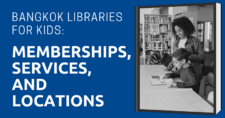


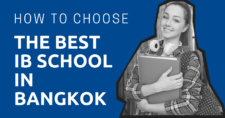
Pls call me back as I am new to Bangkok and need more guidance. Looking for a school where fee is 150k THB to 250K THB annual fees.